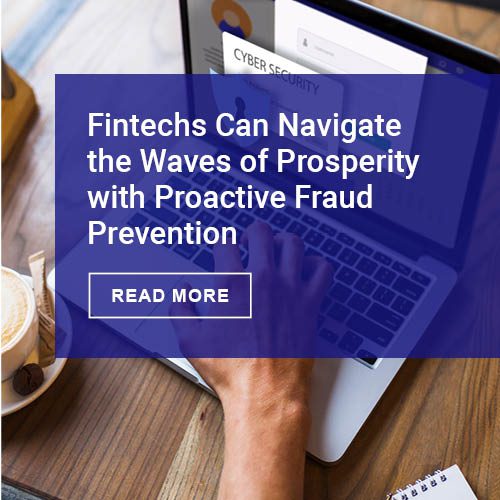Merchants who sell online have access to markets and channels that traditional brick-and-mortar stores can’t match. But those opportunities come with fraud risks that card-present transactions don’t have because of the EMV liability shift. And as EMV has reduced fraud opportunities at point-of-sale terminals, fraudsters have gone all in on CNP fraud. One possible solution for online merchants is chargeback insurance, more commonly referred to as a chargeback guarantee, provided by some fraud-prevention services. Should merchants use a chargeback protection service? There’s not a standard answer to this question.
First, why do some online fraud prevention companies offer chargeback guarantees? It usually depends on whether the company offers decisions or scores. Those that offer decisions approve or decline orders on behalf of their clients, while companies that offer scores rate each order for its likelihood of fraud but allow the merchant to approve or decline. Companies that offer decisions sometimes guarantee they will cover the cost of any fraudulent chargeback because the decision to approve the order was their responsibility. Such a guarantee typically covers all fraud-related chargeback losses, regardless of payment gateway or processor.
Advantages of chargeback guarantees
Chargeback guarantees offer four main benefits that companies may want. First, such programs allow for predictability of costs and better cash-flow management. The only cost the merchant sees is a fixed percentage charged on orders regardless of the actual chargeback rate. In contrast, merchants whose CNP fraud-screening provider doesn’t offer a chargeback guarantee will see transaction fees that vary by volume plus harder-to-predict chargeback costs.
Other benefits are specific to certain types of companies and those in particular stages of growth. Fast-growing companies can eliminate some of the stress and risk of expanding into new markets and categories by having a chargeback guarantee in place to limit losses. Merchants who see wide variation in their order values can benefit from guaranteed chargeback protection. For example, a store with an average ticket value of $150 may not be able to absorb a chargeback on one of the $10,000 handbags that are also in its inventory. Companies with a risk-averse culture can also do well with a chargeback guarantee to provide peace of mind.
Advantages of going without a chargeback guarantee
Despite those benefits, there are some cases in which it makes more sense to skip the chargeback guarantee. Merchants who sell only in low-risk categories may find that the additional cost of a guarantee is not justifiable. The same is true of sellers who operate only in comparatively low-risk markets. Large, well-established merchants with extensive experience handling spikes in fraudulent orders may not need comprehensive chargeback protection because they already have systems in place to avoid most chargebacks.
Other chargeback-guarantee considerations
There are a few other factors to consider, as well. Is there the potential for conflict of interest that might harm your business long-term? Most CNP fraud providers are customer-focused, but some may automatically decline valid transactions to reduce their reimbursement rates. For example, does the provider auto-decline all orders from certain countries? If so, your business could lose revenue and lifetime customer value from those areas.
To avoid such a scenario, look at providers that work with a combination of KPIs including chargeback rate, false decline versus approval rates, and customer service insult rates. These metrics will show you if the provider is evaluating orders thoroughly or protecting themselves at the expense of your revenue and growth.
Does the service place limits on the types of chargebacks that are covered? For example, some providers won’t reimburse for friendly fraud, although industry-watchers say friendly fraud is on the rise because of the ease with which customers can dispute card charges. Customers have to give a reason to dispute a charge, but what fraudster is going to say they’re committing fraud? Reason codes, which some chargeback protection services use to decide which chargebacks to reimburse, often don’t reflect the real reason behind the chargeback, nor do they help the merchant prevent similar chargebacks in the future. To avoid paying for chargeback protection as well as those friendly fraud chargebacks, look for providers that go beyond reason codes to cover all fraud-related chargebacks.
Different profiles, different business needs, different solutions
Chargeback insurance can prevent some revenue loss, but this benefit must be balanced against the cost of the program and the cost of sales lost to false declines. To make an informed decision, online sellers should look for solution providers that offer two different service options and an ROI analysis based on those options. For example, one option might be a 100% chargeback guarantee that covers all fraud-related chargebacks. With this option, there is no chargeback-fraud risk to the merchant.
The other option might be chargeback prevention without the guarantee but with tiered pricing based on different chargeback-to-decline ratios, similar to the way insurance plans come with a range of deductible and premium options. The initial costs are your responsibility, but after a certain threshold, you have the right to be compensated for your losses. With this option, the merchant may save money over the long run.
Assessing your fraud risk, risk-tolerance level, and fraud-protection needs takes time. So does talking to chargeback-prevention service providers and evaluating the options they offer. The effort can pay off in terms of a solution that fits your company’s unique combination of vertical, markets, risk-tolerance, and budget, while protecting your revenue and customer relationships.
Rafael Lourenco is Executive Vice President for ClearSale, a Card-Not-Present fraud prevention operation that protects e-commerce merchants against chargebacks. The company’s flagship product, Total Guaranteed Protection, is an end-to-end outsourced fraud detection solution for online retailers. Follow on twitter at @ClearSaleUS or visit http://clear.sale/.











